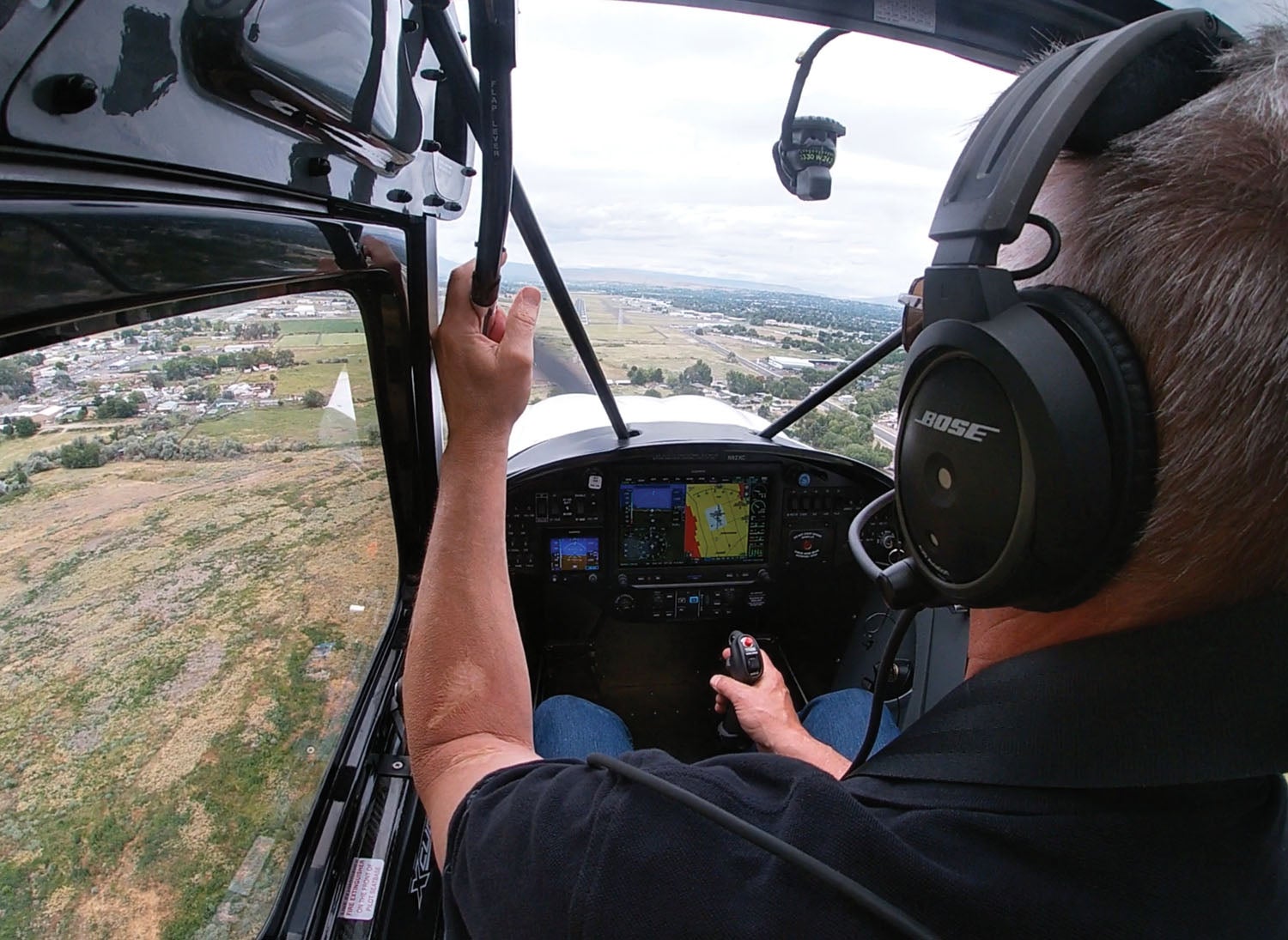 One of the greatest understatements ever uttered on an air-to-ground radio link was made by astronaut James Lovell on Apollo 13. “Uh, Houston, we’ve had a problem.” That simple and direct phrase, delivered without emotion, began one of the most astounding “off-nominal” rescue situations in the history of spaceflight and taught many lessons on how not to panic but to think creatively to get the job done. In this case, it was getting a crew back safely to earth with a crippled spaceship. This might seem worlds away from your new homebuilt aircraft or one that you have been asked to fly for a friend—but they are all just flying machines. Many of the same rules apply. Fly the machine, work the problem, and don’t do anything rash or stupid.
One of the greatest understatements ever uttered on an air-to-ground radio link was made by astronaut James Lovell on Apollo 13. “Uh, Houston, we’ve had a problem.” That simple and direct phrase, delivered without emotion, began one of the most astounding “off-nominal” rescue situations in the history of spaceflight and taught many lessons on how not to panic but to think creatively to get the job done. In this case, it was getting a crew back safely to earth with a crippled spaceship. This might seem worlds away from your new homebuilt aircraft or one that you have been asked to fly for a friend—but they are all just flying machines. Many of the same rules apply. Fly the machine, work the problem, and don’t do anything rash or stupid.

The basic airplane is well enough understood in this day and age that the average recreational private pilot will most likely never have to deal with an emergency. Airframes are rugged and designs well-proven, engines are reliable over the course of many thousands of hours and avionics have reached a level of reliability undreamed of in the age of discrete components on circuit boards. It is hard to get lost with half a dozen GPS-enabled devices in the cockpit, weather information is plentiful and we’ve got enough fuel management devices available that it is hard not to give a funny look to anyone who actually creates an empty tank in flight.
But the world of Experimental aviation can still present surprises to those who venture deeply enough into the realm of the unproven. Especially when dealing with new or modified designs or systems that have been modified, pilots are still finding themselves to be honest test pilots. Skills necessary to deal with the unexpected are potentially going to be needed, and the question many ask is, “Where do I get those skills?”
The answer is often that old phrase that goes something like, “You deal with problems with experience, and you gain experience by dealing with problems.” In other words, it is hard to find a manual for how to deal with the “off-nominal,” a phrase pounded into me by years of service in the space program, where for some reason, we choose not to use the word “emergency” unless it is an actual, uh…emergency. We expect new systems and craft (space or air) to have problems and quirks, so we train heavily (and continuously) to deal with the unexpected.
In the world of certified aircraft, most common (and many uncommon) problems have already been thought through, and procedures written, tested and entered in the POH. If you have a problem, turn to the appropriate page and follow the procedure. But in the world of new and Experimental craft, you can’t expect that everything has been experienced, that every potential failure has been smoked out. Therefore, you have to learn to think like a flight test engineer or test pilot. You need to logically work your way through a problem—not make the problem worse by taking rash action—and figuring out the means of safely getting back on the ground. You don’t need to solve the cause of the problem—you simply need to come up with an effective means of getting down. Brilliant problem solving can take place later. In the air, you simply want to keep yourself safe until all the parts stop moving.
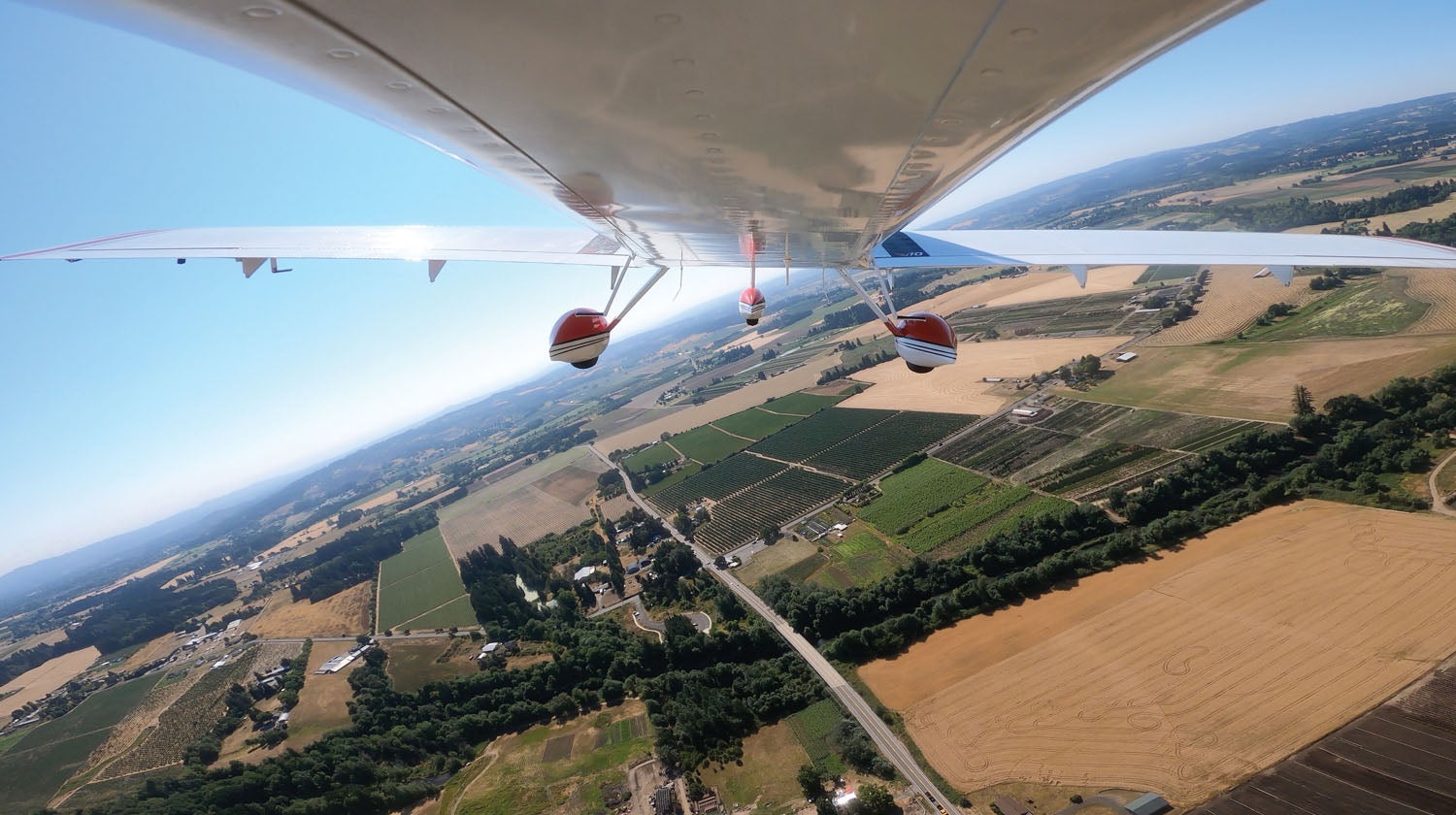
I have spent a lifetime not only training to handle off-nominal situations in spacecraft but in doing both flight and maintenance testing of aircraft. In all those years, I have followed one cardinal rule when dealing with something other than what I expected—fly the airplane first, then deal with the issue! Always continue to fly the airplane, no matter what else happens. Time and time again, it has been proven that if you crash under control, you are far more likely to survive than if you hit the ground in some random attitude and speed. No matter what—always partition one part of your brain to keep flying the airframe while you deal with other issues.
Of course, some off-nominal conditions occur because you no longer have the means to control your trajectory—in this case, the first goal is figuring out how to make your machine go where you want it! So let’s talk about that first.
Loss (or Lack) of Control
Probably the most terrifying thing you can encounter in the air (aside from fire, and the difference in terror between the two is slim) is the inability to make the airplane go where you want it to go. This can occur because of mechanical failure or a problem in the basic stability parameters of the machine. The first case can happen anytime—the second is likely to be discovered on a first flight or the first flight of an edge-of-the-envelope condition.
First flight, or envelope test flights, are by their very nature going to have all your senses and capabilities spun up to high speed. You should be thinking ahead about what you are going to do if you don’t get the response you want out of the airplane. You should have a plan in place for any point in the flight for how you can use alternate control techniques to get things back in the box and get back on the runway. For a first flight, this is one reason you want to have a long runway available, because as soon as you break ground with a new airplane, you can feel out roll, pitch, and yaw with minute little control deflections before you gain much speed or altitude—and if you don’t like what you feel, you can pull the power off, land, and be done with it for the day.
It is unlikely that if you have positive control in those first few seconds that something completely different will happen during cruise flight. But it does occur—most likely not due to aerodynamics or stability issues, but because of a mechanical issue. Unless, of course, you are flying a machine with a huge speed range and handling is radically different at top speed than it is near the stall. Stability and control issues will show themselves as divergent attitude excursions that can’t be stopped with the flight controls or reverse responses to normal control motions or pressures. Mechanical issues can happen at any time and generally manifest themselves by disconnections or jams.
If you discover a stability and control issue after you have run out of usable runway in which to pull off the power and land, you are going to have to find some alternate form of control to get the response you want.
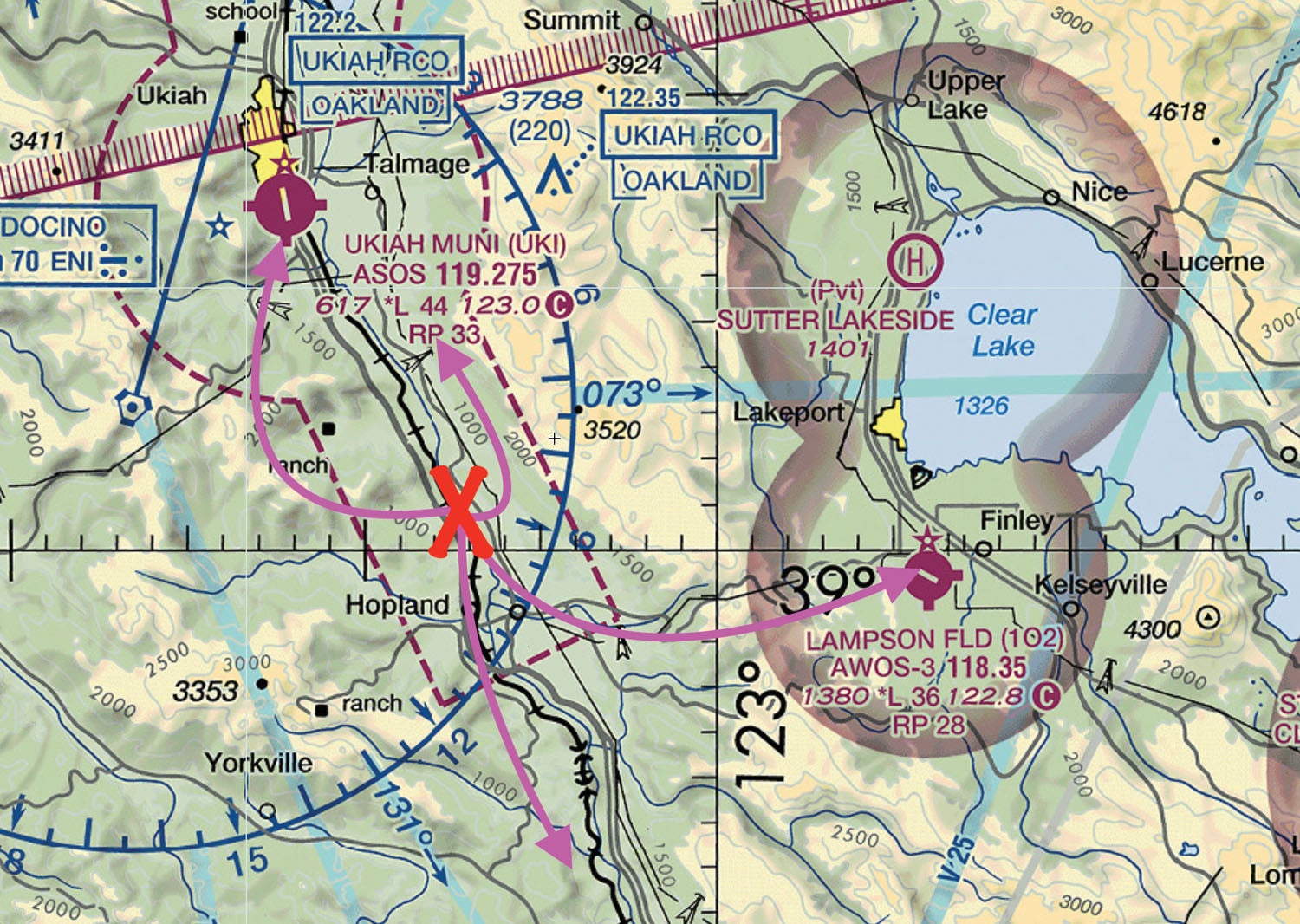
Here’s the Pitch
Let’s look at pitch problems. I have had a case where things felt good on the initial climb, but I quickly discovered that as I built speed, the airplane wanted to pitch up, and I had insufficient “down” authority to stop it. What I needed was more “down” pitching moment, so I thought quickly about what causes the airplane to pitch down.
While I was thinking about how to get the pitch authority I needed, I still needed to prevent the airplane from trying to loop (because it would have simply done a vertical stall and a tailslide). So I rolled the airplane off into a steep turn to prevent the bleed-off of energy associated with a climb. The engineering way to think of this is that I pointed the lift vector off vertical, making the airplane go around in circles instead of going up. I added just enough to balance things out so that I wasn’t losing airspeed but wasn’t going to climb. That gave me time to think.
This airplane had a top-mounted engine that caused a pitch down with more power and up with less—it didn’t help me because I didn’t want to go really fast until I was sure I had control. But it also had flaps and retractable landing gear. Flaps generally pitch an airplane down and landing gear, being below the airplane, will tend to add drag in the direction to pitch you down. So, in this case, I deployed both gear and flaps—forget about maximum extension speeds because you need control more than you need gear doors—and this put a “down” bias into the system. I suddenly had enough control with the stick to get the nose to go down as well as up. How did I think of this? I am an aeronautical engineer, so I understand pitching moments; as a pilot, I have experienced pitch down with flaps on almost every flight, so I reached into my memory for the knowledge I needed.
The important thing is that you fly knowing what control movement can do for you and the byproduct of those motions. Don’t fly by rote. Think about what you have on hand to get the response that you need.
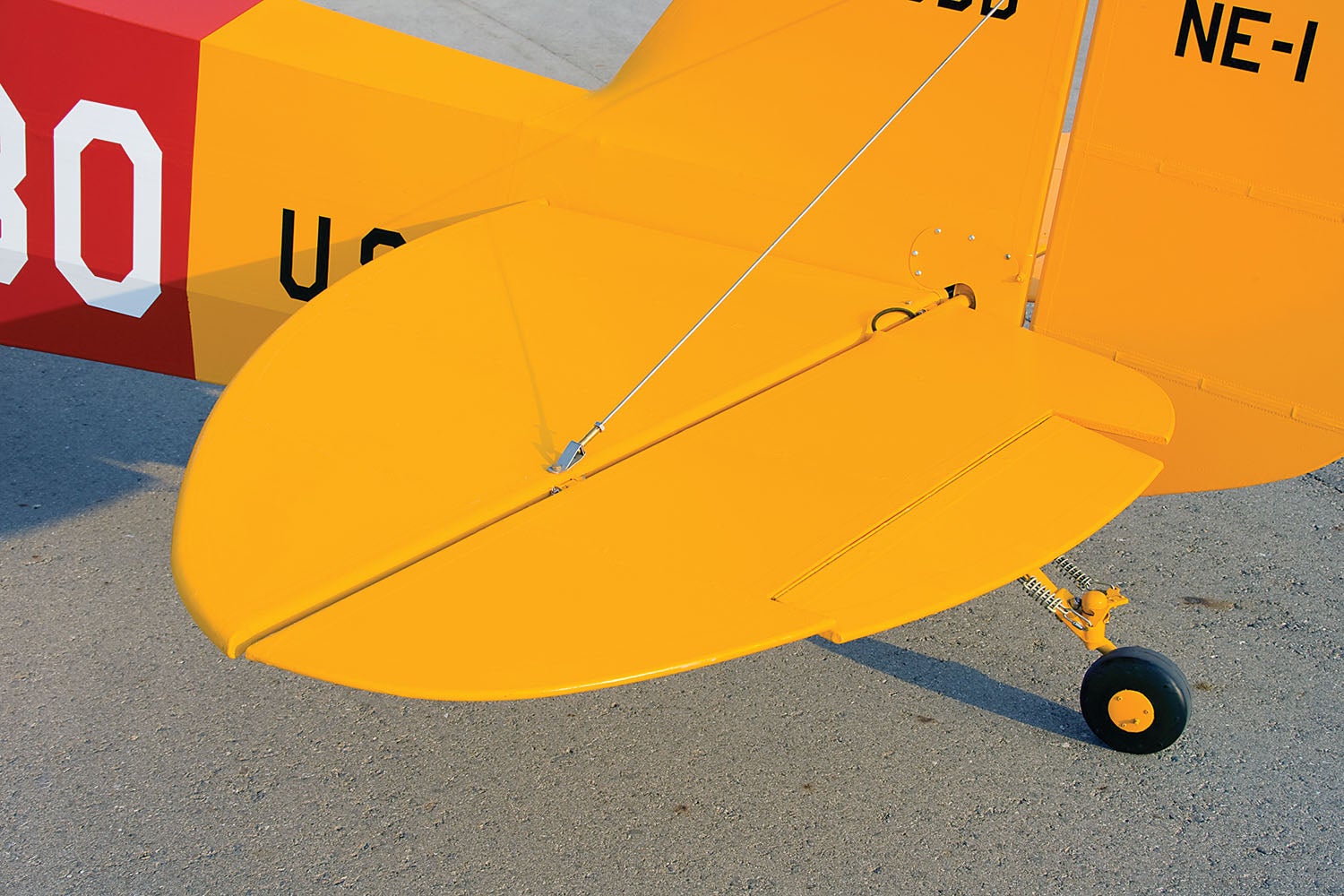
The Big Disconnect
Disconnected controls are the thing of nightmares—the stick or pedals go slack, and you realize that nothing you do with them will change where the airplane is pointing. In this case, you first ascertain that the airplane is still stable, not diverging wildly. If it is, you have time to think of a solution. I know of a race plane that had a weld break that caused the stick to lose both pitch and roll control. But he still had rudder and throttle. Throttle changes pitched the airplane up and down. Rudder still worked for directional control. Fortunately, the range of pitch he could get with the throttle was within the envelope of pitch he needed, and he was able to rudder the airplane around to the runway and land (very fast) before pulling all the power off to roll to a stop. There were no flaps, or he could have used those for pitch as well.
I once had a case where I had lost electrical power but had an electrical ignition system that was self-generating—as long as the engine rpm stayed up above 800. While it is really hard to get a prop to go below this in flight, even with the throttle at idle, I didn’t want to take a chance of the engine quitting and getting low on energy. I also needed to get slow enough to land! So I deployed full flaps to add copious amounts of drag (it was a bush plane with big boards), which meant I needed lots of power to keep from settling short of the runway. Once I had the runway made, it was simple to throttle back a little (but still far above idle) and land in the high drag configuration—I even had enough rpm to keep the engine running to taxi off the runway. I then used brakes to allow me to keep enough power so I could taxi to parking. In this case, like that of the disconnected stick in the race plane, throttle was used as a flight control.
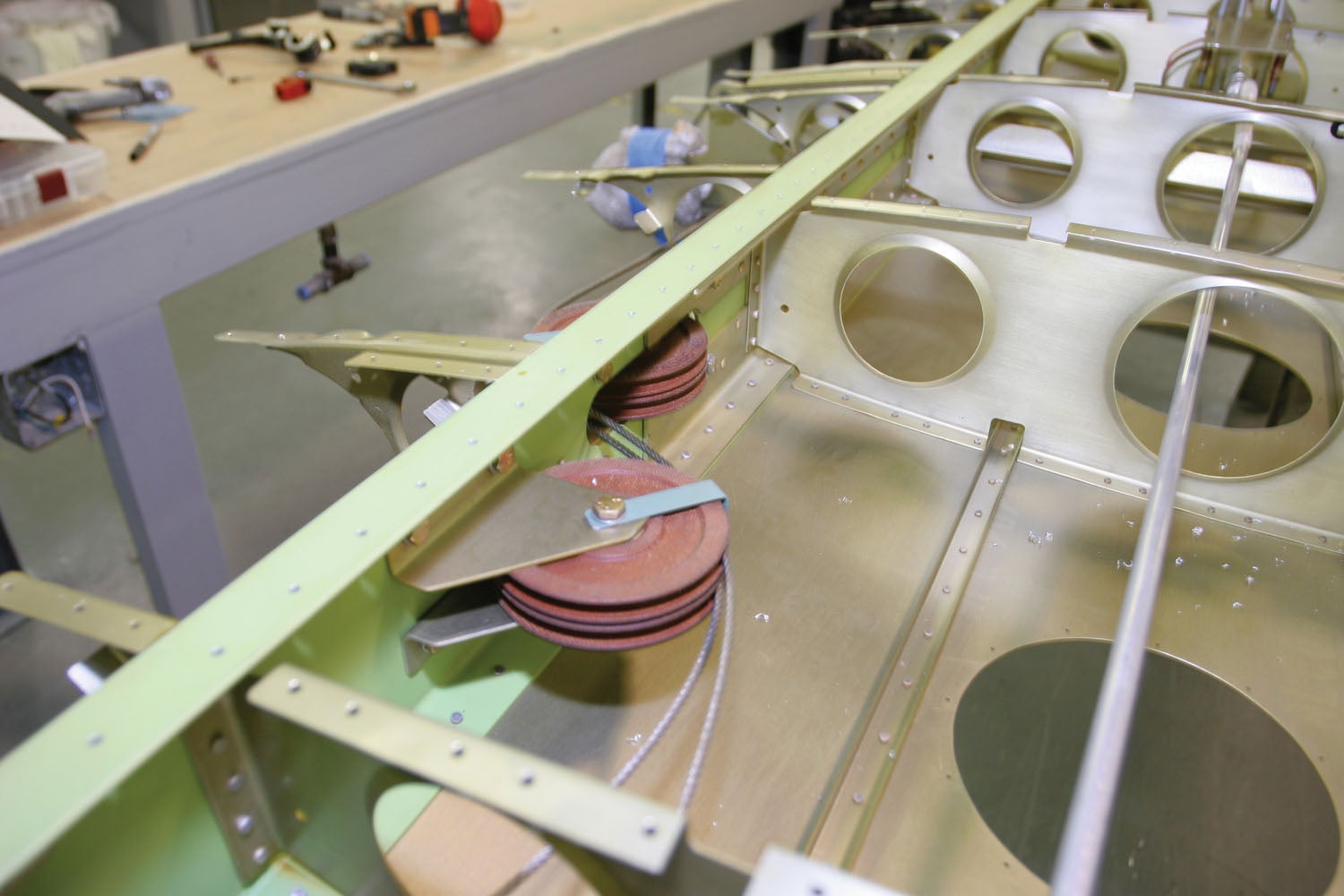
Jammed controls are another terrifying prospect. Decades ago, I was flying an old J-3 that I owned with a couple of other guys. The airplane was a shared resource, and we rarely saw each other—we just showed up and flew for a while. The airplane rarely went more than 1000 feet agl—it was for shooting touch and goes or scaring the local cattle with your shadow on a summer evening. One day, I was out following a little creek that flowed through the pastureland for miles. Twisting and turning, I came to a sharp bend and raked in some left bank. When I went to take some bank out—the stick wouldn’t move! I was only about 500 feet up, so I didn’t have much time, but my first thought was to see if it was frozen in both directions, so I wiggled the stick further left, then back to the right—and it moved! I leveled the wings and climbed for a couple of thousand feet of altitude.
Once I had some air below me, I looked and beheld a loose bolt sitting down in the stick well between the stick and the control stop on one side. I reached down with a pencil and pushed it out of the way, and now I had full control motion in each direction. Yup—a loose bolt almost did me in! When I got home, we grounded the plane, pulled off all inspection covers and did a thorough inspection for anything that wasn’t properly secured. By the way, have you found that pen you lost a few flights ago? Where might it be? All my sticks on all my airplanes now have stick boots to keep anything small from falling and messing up the works.
Cables break and things come undone. I have never had a rudder become disconnected, but I have had numerous instances where tailwheel chains broke or came off. In most of those cases, I didn’t even know it until I had shut down and gotten out of the airplane, proving only that rudder control is usually adequate for ground handling and taxi. But if you do have a loose or jammed rudder, slow the airplane down to keep well below the potential for flutter, then experiment (at altitude) with turns and control, so see how you might have to compensate before heading down to land. And when you do head down, pick a runway with as little crosswind as you can get.
The bottom line when it comes to control issues is to learn how the airplane can be controlled with what you’ve got—not with what you’d like to have, or hope you have or what you were taught that airplanes should have. Don’t forget that in addition to primary flight controls, you have secondary controls—flaps, trim, maybe spoilers or speed brakes—use them all to your advantage. Trim, in particular, is something to think about—you can fly by just using trim tabs if you have them in all axes or can use elevator trim to fly pitch if that is all you have. But remember—if you have electric trim and lose electrical power, you’re going to be stuck wherever you are.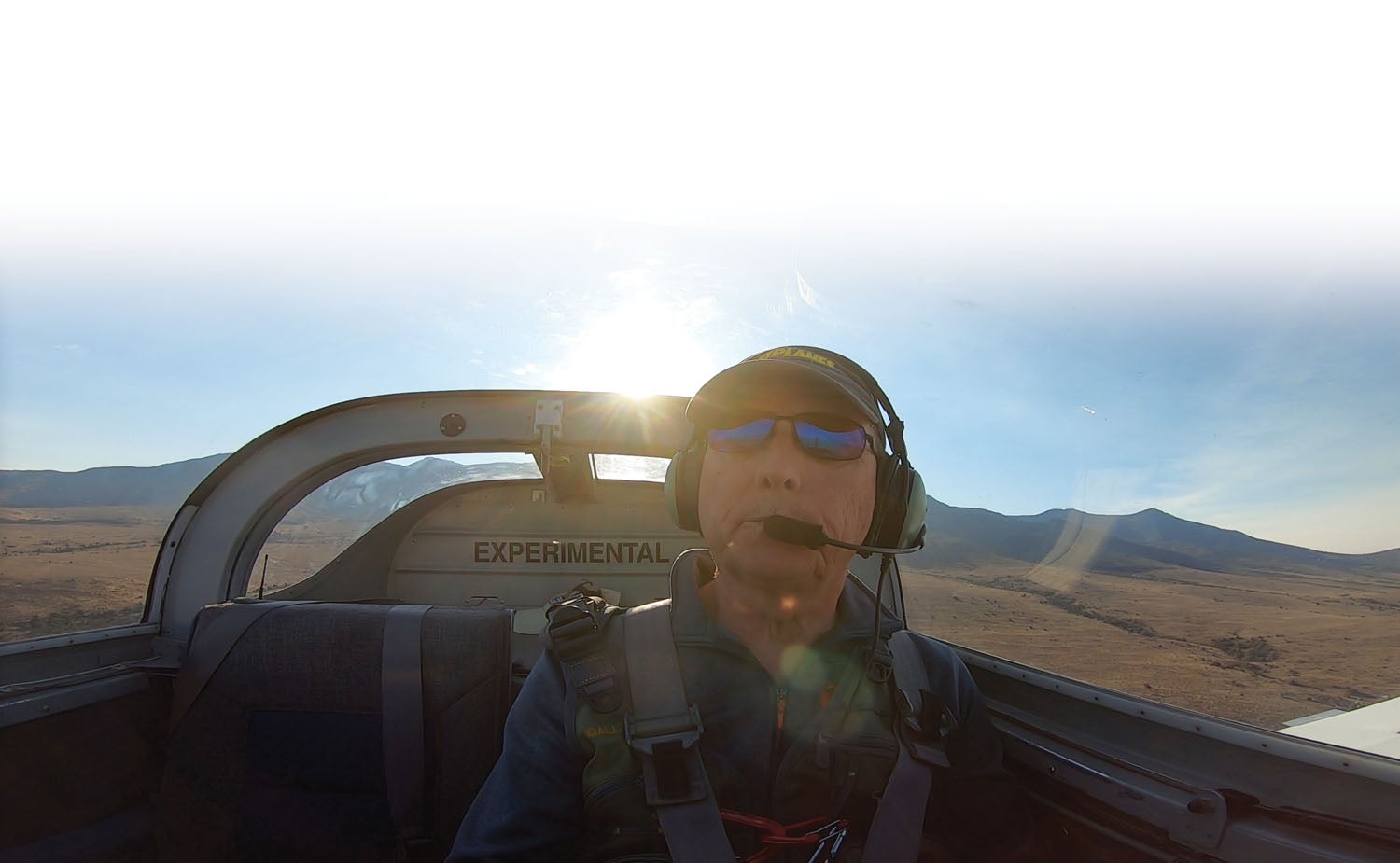
In Reverse
It has been shown that experienced, adaptable pilots can even control airplanes with reversed controls—so long as they can play with the new setup well away from the ground to learn some new reflexes. This can be done in a remarkably short time—it all depends on your ability to be flexible.
Years ago, an aerobatic pilot in Europe had a wing spar failure—the left wing began to fail upwards. He rolled the airplane right to unload that wing until he was inverted, then loaded it up in the negative direction—and it held. He flew back to the field inverted, then kept that wing loaded in the negative direction as he rolled back upright in the landing flare. Remarkable piloting, of course—but also remarkably adaptive troubleshooting and inventiveness. What this takes is a fast mind and thinking about how and why airplanes fly, how the controls work and how the structure is put together.
Next up, I’ll have a more detailed look at power failures and some of the best tactics for managing them.
Photos: MJ Yeager, Kevin Wing, Marc Cook, Shutterstock, NASA Archives.














“The important thing is that you fly knowing what control movement can do for you and the byproduct of those motions. Don’t fly by rote. Think about what you have on hand to get the response that you need.”
Good article. Thanks.
i beleive in the AQP gospel and the AQP god, with “gospel” and “god” used here as metaphors. AQP (Advanced Qualification Program used by airline pilots) does not include every single possible “off-nominal” flight experience, but it includes 14 situations that become “off-nominal” very quickly and are highly dangerous when we are not mentally and physically trained to face them. They account for the large majority of situations that, handled more appropiately, would not have become fatal. AQP should become the god and gospel for General Aviation as well, an absolute requirement. I just like live pilots enjoying life in living color.